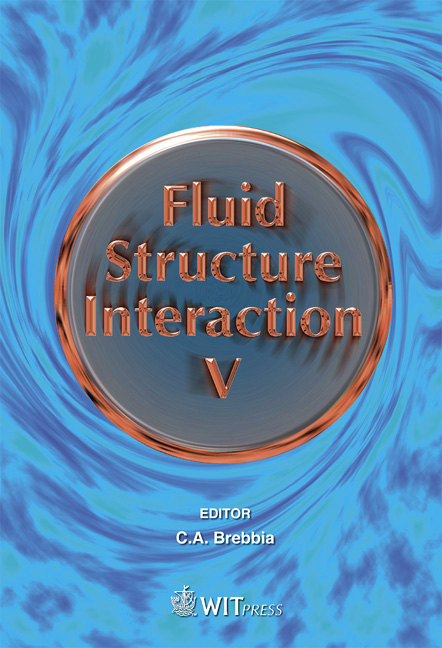The Effect Of Geometric Parameters On The Head Loss Factor In Headers
Price
Free (open access)
Transaction
Volume
105
Pages
9
Page Range
355 - 363
Published
2009
Size
524 kb
Paper DOI
10.2495/FSI090331
Copyright
WIT Press
Author(s)
A. Mansourpour & S. Shayamehr
Abstract
Head loss factor k of many hydraulic components is available in handbooks but for complex shapes such as headers, there is no standard value. The purpose of this study is to help hydraulic designers to predict a value for the head loss factor in headers based on their geometric parameters. The analysis is carried out solving the Navier-Stokes equations by means of numerical methods. In this study, one parameter is changed and all the others are fixed to predict the effect of that specific parameter on the head loss factor. Results show that: 1- Increasing the chamber diameter increases the head loss factor k. 2- Increasing the chamber length increases the head loss factor k until it reaches its critical value and then remains fixed. 3- Increasing the outlet diameter decreases k. Keywords: k factor, header, head loss, geometric parameters, Navier-Stokes. 1 Introduction Nowadays in many pump stations or other utility installations, headers are seen as multiple-water-inlet collectors. Strength and stability design of these kinds of hydraulic devices are mentioned in many handbooks and have a straightforward procedure, but in the field of fluid mechanics and the behavior of fluids inside headers, there are few available studies. Since pressure drop measurement is quite poor in theory, it relies on experimental methods in most cases. Pump sizing and the challenge in selecting the most economical system lies in determining the total head loss. There are a number of important factors in the analysis that need to be studied thoroughly in order to satisfy the requirements for minimum external pressure on fluid-moving equipment. Friction factor, the
Keywords
k factor, header, head loss, geometric parameters, Navier-Stokes.





